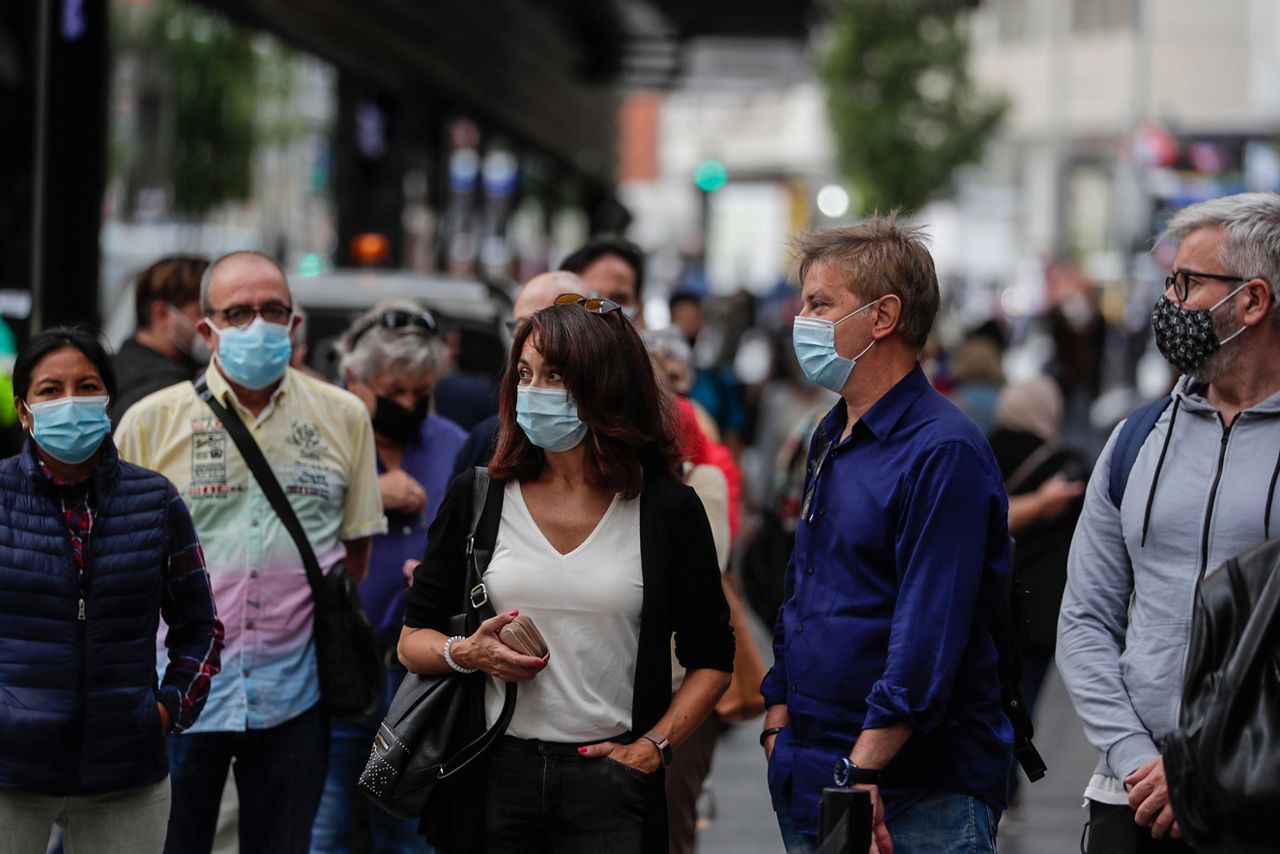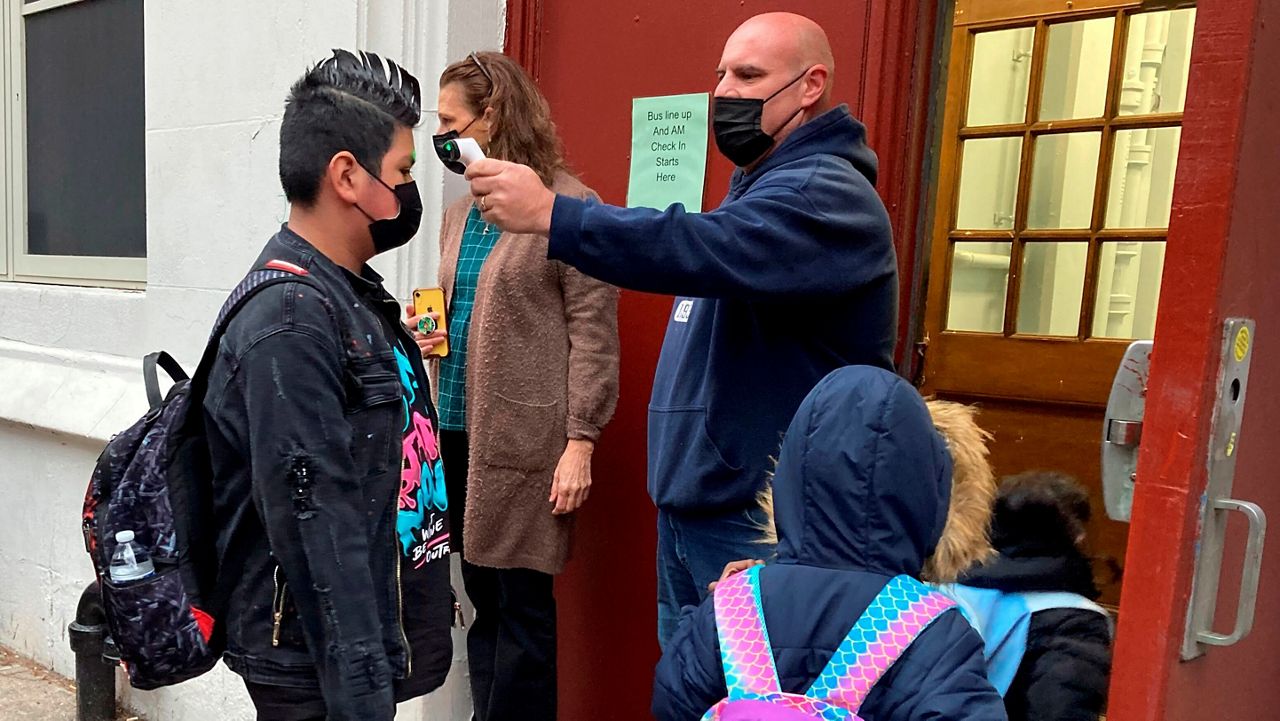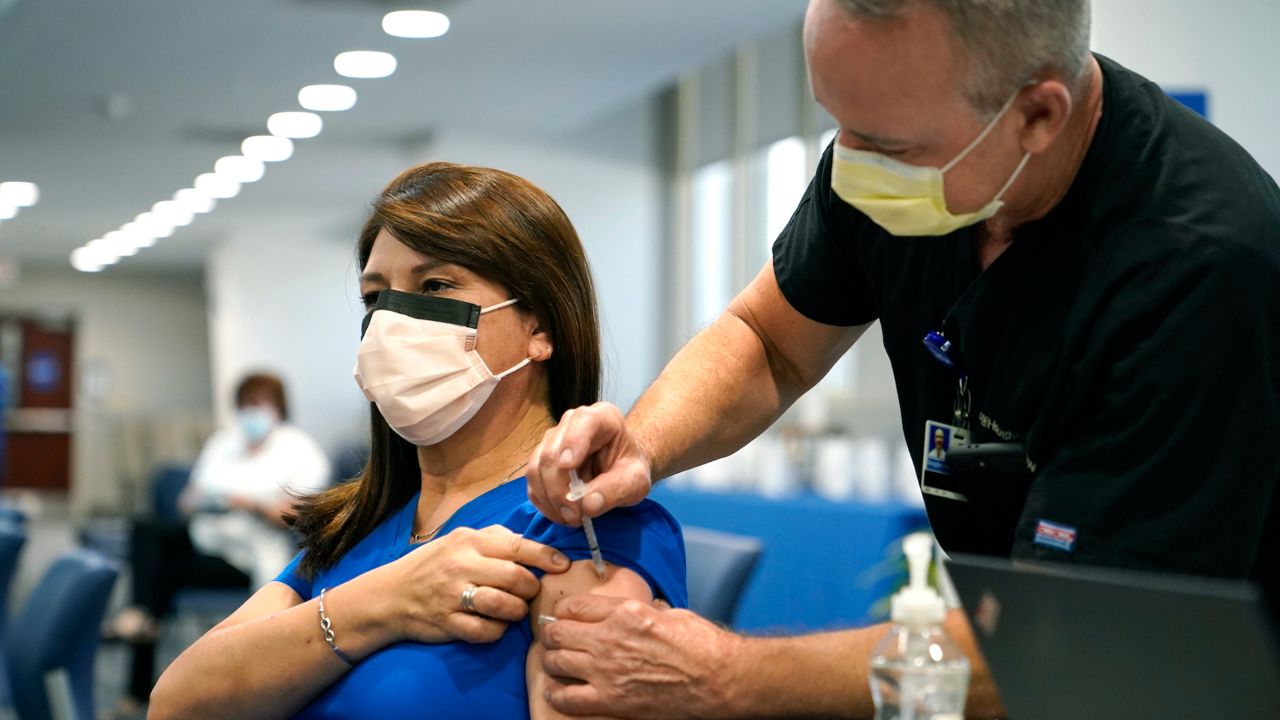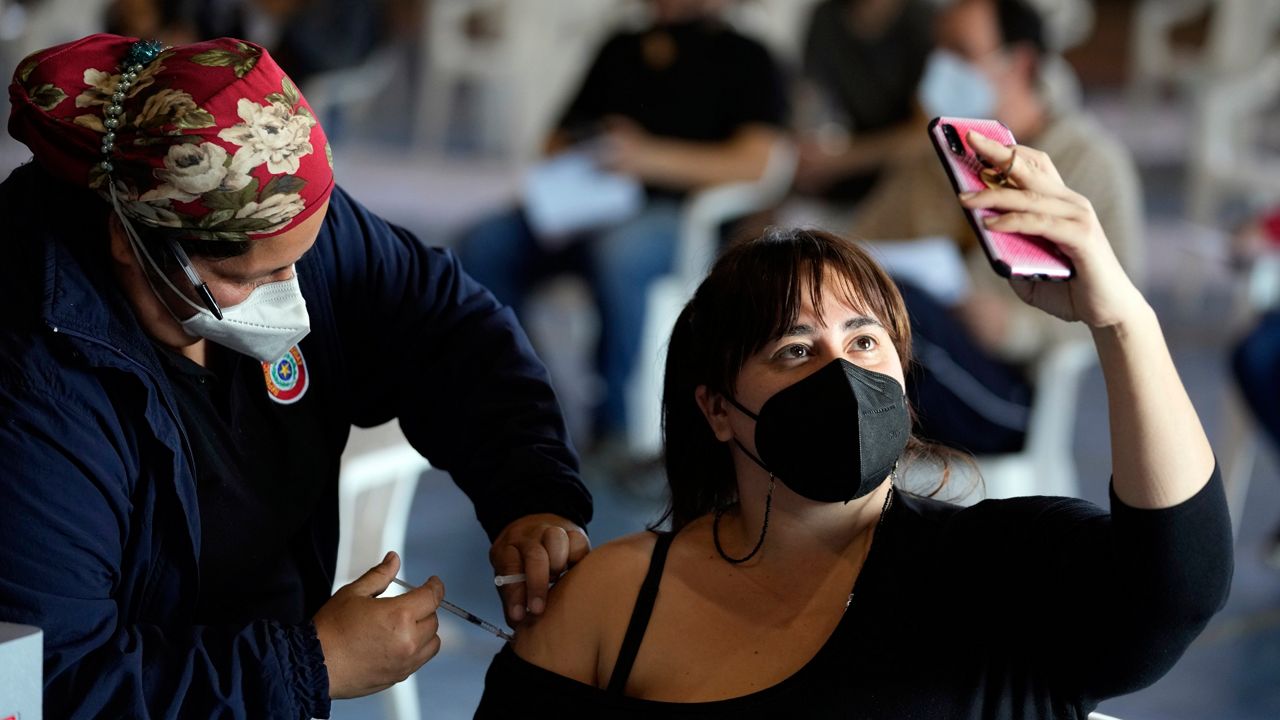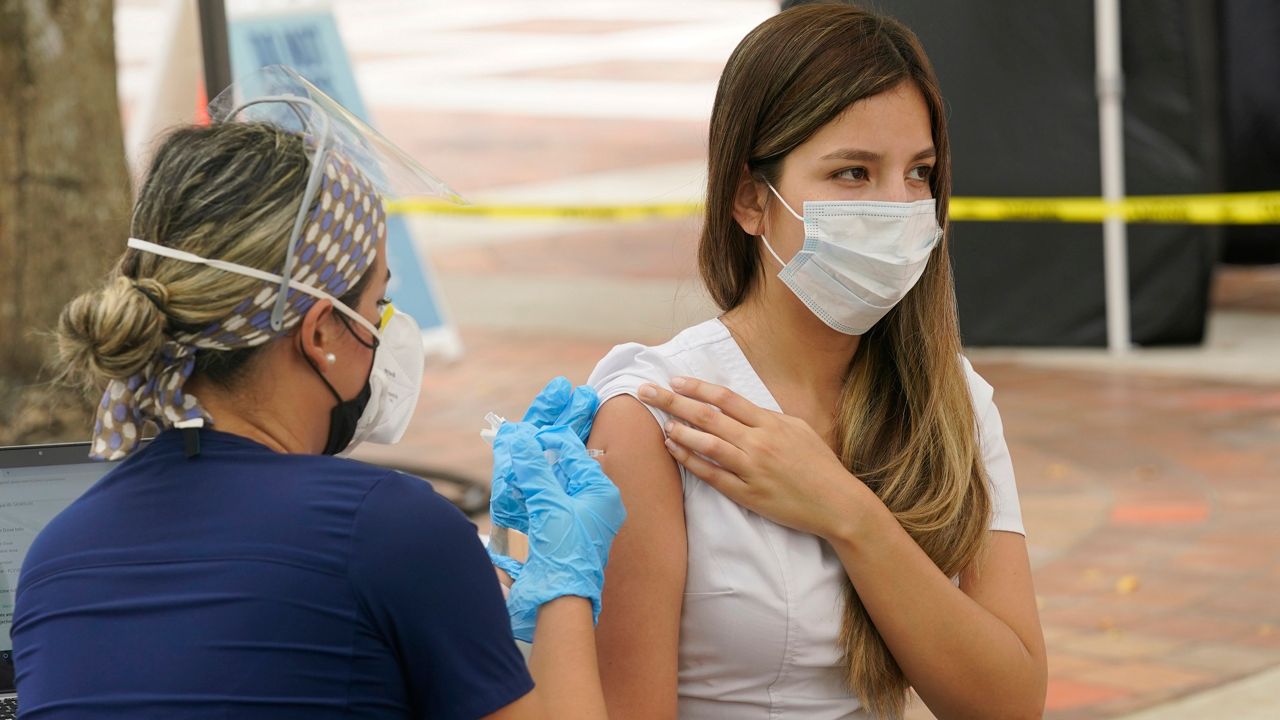Over the course of the past few weeks, Wisconsin’s coronavirus numbers have shot up at alarming rates. Record-breaking infections, hospitalizations, and deaths have turned the state into one of the worst hotspots in the U.S. and sent health systems scrambling to keep up.
At a media briefing last week, state leaders painted a dire picture of the state’s pandemic response.
“Wisconsin is in crisis,” said Andrea Palm, Secretary-designee for the Department of Health Services. “And we need to take this seriously.”
Here, we take a look at the data behind the current outbreaks and what they mean for Wisconsinites.
How bad are things, really?
After a summer of ups and downs, Wisconsin’s coronavirus infections have shot up dramatically as fall has gotten underway.
Since the start of the pandemic, the state has reported 173,891 cases in total. Half of all those infections have been reported in the past six weeks.
Over the course of that month and a half, the average daily cases have more than quadrupled, and average daily deaths have more than tripled, Palm said at the briefing.
“Our numbers are high, and they’re growing rapidly,” Palm said.
According to last week’s report from the White House Coronavirus Task Force — published by the Center for Public Integrity — Wisconsin’s cases were growing at the fourth-highest rate of any state in the U.S., placing it in the “red zone” for COVID-19 spread.
Another risk model from the Harvard Global Health Institute also ranks Wisconsin’s current outbreak as one of the worst in the country, recommending that stay-at-home orders may be necessary to contain the spread of the virus.
The DHS reported a record 3,928 new confirmed cases on Sunday. And unlike in past upticks, the new highs in positive tests have also driven steep inclines in hospitalizations and deaths.
So far in October, 252 Wisconsinites have died from COVID-19, the DHS reports. That’s already the highest monthly total since May, and likely to keep ticking up as the month draws to a close.
On Friday, there were a record-breaking 1,101 patients across the state hospitalized with COVID-19. And last Tuesday, the DHS reported its highest single-day number of deaths from the virus with 34 people passing away.
With a positivity rate now averaging over 20% — meaning that around one in every five people tested for coronavirus is receiving a positive result — these numbers aren’t likely to slow down anytime soon.
What regions are being hit the hardest?
Though COVID-19 activity is high across the state, Northeast Wisconsin and the Fox Valley are still seeing the most intense outbreaks.
According to DHS data, the disease burden over the past two weeks — measured as the number of new cases per 100,000 residents — was at 1,316 in the Fox Valley and 1,022 in the Northeast. The overall disease burden for the state was just under 628.
For comparison, the DHS points out, any number above 350 is considered “a very high threshold for disease burden.”
Multiple cities from these regions also rank highly on the New York Times’ list of outbreaks in metro areas across the country. Though growing outbreaks in Idaho, Montana, and the Dakotas have moved up on the list, Wisconsin metro areas still take five of the 10 top spots.
The Oshkosh-Neenah region has the third-worst outbreak in the nation, according to the Times analysis, with Appleton, Sheboygan, Wausau-Weston, and Green Bay close behind.
Winnebago County, which encompasses Oshkosh and Neenah, has seen a 400% increase in cases in the past two months, according to DHS data.
Every one of Wisconsin’s 72 counties has either “high” or “very high” case activity, the DHS reports. And 23 of those with “very high” spread are also seeing case trajectory continue to grow.
How are hospitals faring?
With more and more patients facing severe symptoms, Wisconsin’s hospitals continue to move closer to reaching full capacity.
Officials were already sounding the alarm about strains on public health infrastructure earlier in the month, when patient hospitalizations were nearing 700. Now, they’re continuing to hover above 1,000.
As of Wednesday, the latest data available, the DHS reported 85% of all hospital beds and 86% of ICU beds in the state were occupied. And Palm added that staffing shortages across the state were putting additional strains on hospital systems, as workers have contracted the virus or gotten stuck in quarantine after possible exposures.
Last week, the state opened up its alternate care facility located at State Fair Park — a measure Palm previously described as the “ultimate insurance policy” that ideally would never need to be activated.
The field hospital is set up to accept patient transfers from overwhelmed systems across the state. It hasn’t taken in any patients yet, the DHS reports, but has 530 beds that are ready.
The Southeast region, where the facility is located, is at 90% capacity.
What’s next for Wisconsin?
With record-setting highs on just about every metric, Wisconsin is at a “critical point” right now, Gov. Tony Evers said at last week’s briefing.
And the outlook for the coming weeks is grim: “We know this is going to get worse before it gets better,” Palm said.
Hospitalization numbers will likely continue to rise as long as overall case numbers keep going up, she added.
Hospital stays and deaths generally are lagging indicators, ticking up a couple weeks after infections spike. Since positive cases have continued to rise, other metrics will probably keep following. Plus, the impending flu season will likely add to the strain on health care systems.
State officials urged Wisconsinites to avoid contact with people outside of their immediate households, especially in enclosed spaces. With the intense community spread throughout the state, Palm said people should consider any gathering outside the home as “a potential place that they could be coming into contact with COVID-19.”
A state order earlier this month limiting bars, restaurants, and other indoor venues to 25% capacity was reinstated Monday after being temporarily blocked by another judge. Though the order doesn’t apply to schools, a number of public and private schools have shifted to all-online learning amid high rates of community transmission.
There’s also the matter of the 2020 election, with early in-person voting kicking off Tuesday and Election Day just two weeks away. Evers acknowledged that “having an election during a pandemic is pretty tricky business,” but said he believes voting will be “safe and effective” in all its forms.
After Wisconsin’s controversial election in the spring, researchers published conflicting reports as to whether in-person voting did end up causing more coronavirus infections. However, scientists say that with the right precautions, going to the polls on Election Day should be relatively safe, if not entirely risk-free. Infectious disease expert Anthony Fauci told CBS News that the risk level would probably be about the same as waiting in line to get a cup of coffee.
Beyond essential tasks like voting or getting groceries, though, state and federal officials recommend limiting activities outside the home as much as possible. Indoor gatherings in particular are a no-go, even as the weather is becoming chillier, since airborne transmission may play an important role in infections.
Otherwise, Evers and Palm continued to emphasize the basic prevention measures: Wearing face coverings when you have to go out in public, getting tested and quarantining if you might have been exposed, and getting your flu shot to prevent extra burdens on the hospital system.
The White House report states that failure to comply with mitigation measures “will lead to preventable deaths” in Wisconsin.
“We do not have to accept rising case numbers. We do not have to accept community spread,” Evers said. “We control our own destiny here.”




